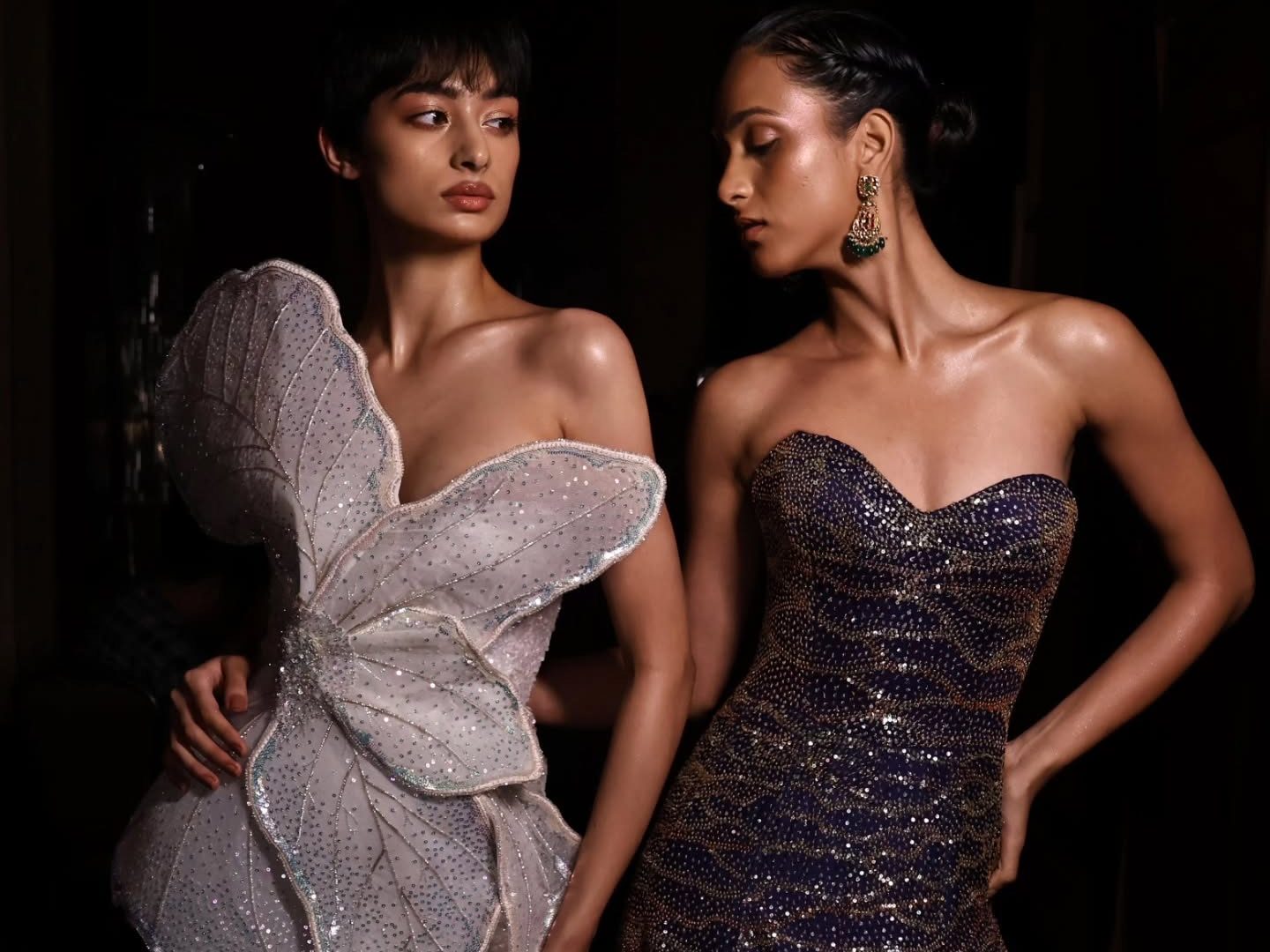
On a set lit in cool blue tones, models clad in Rahul Mishra’s surreal creations of shimmering gold, embroidered silk, and sculptural organza took the runway to kick off India Couture Week 2025.
Mishra’s Becoming Love collection, which was first showcased at Paris Couture Week, is an exploration of love in all its facets. This is not the sugar-sweet, often trite emotion of Valentine’s Day greeting cards. Instead, the collection, which is inspired by Sufism’s seven stages of love, explores the purity of love as well as the power of grief, obsession, death and transformation.
Artistic Ties
In true Rahul Mishra fashion, the looks are both striking upon first glance and deserving of closer examination. The show opened with a gold organza piece with undulating curves, mimicking the shape of a heart to evoke “the rhythm of love”. Floral motifs, a favourite of the designer’s, were aplenty, often embroidered onto satin or tulle using traditional Indian techniques such as aari and zardozi. The collection also draws inspiration from the works of the artist Gustav Klimt; the black and gold mosaic effect dresses are unmistakable homages to his famous painting, The Kiss. The use of freshwater pearls, sequins, and metal as embellishments and in embroidery created a mesmerising interplay of light across the fabrics.
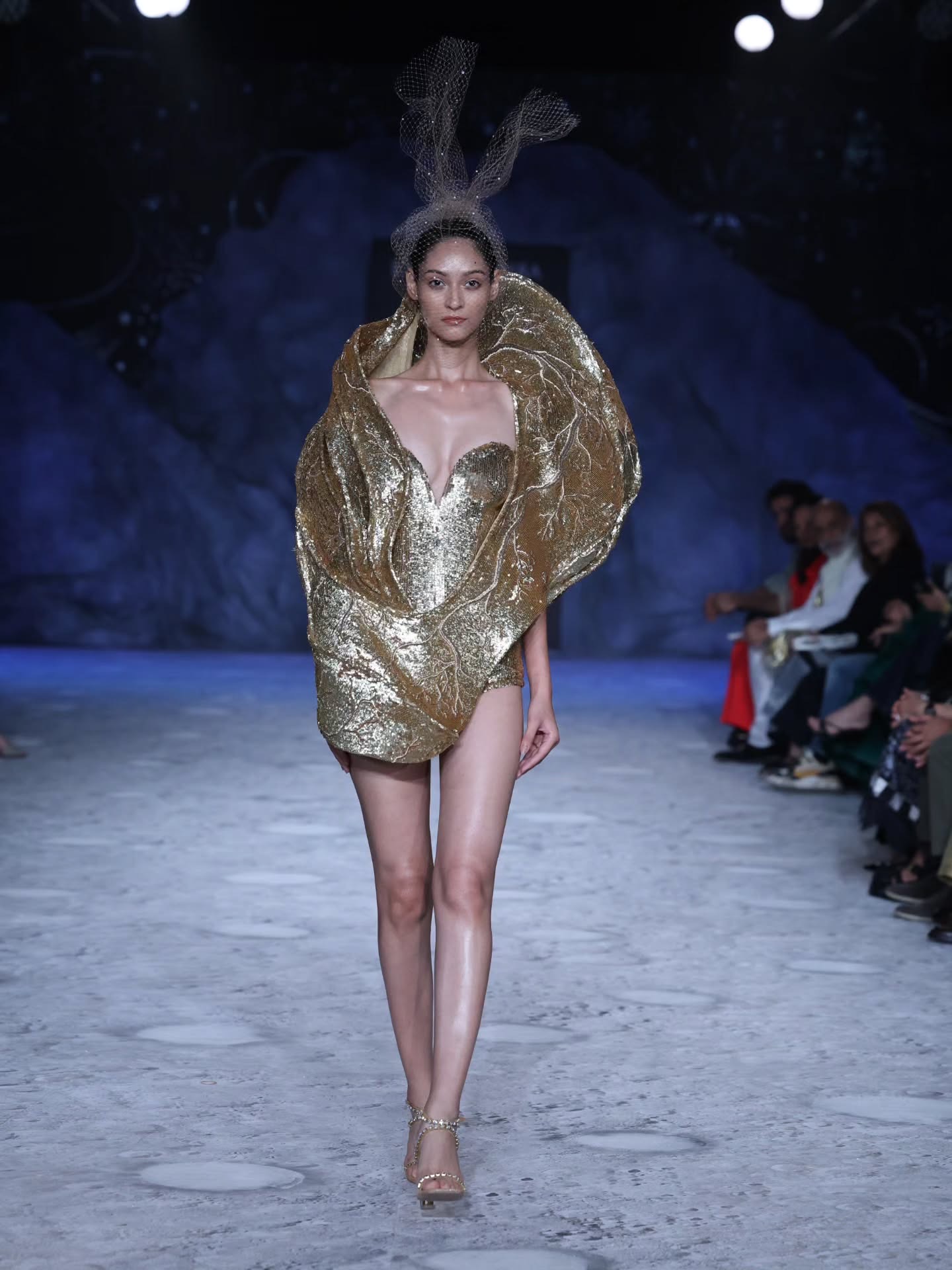
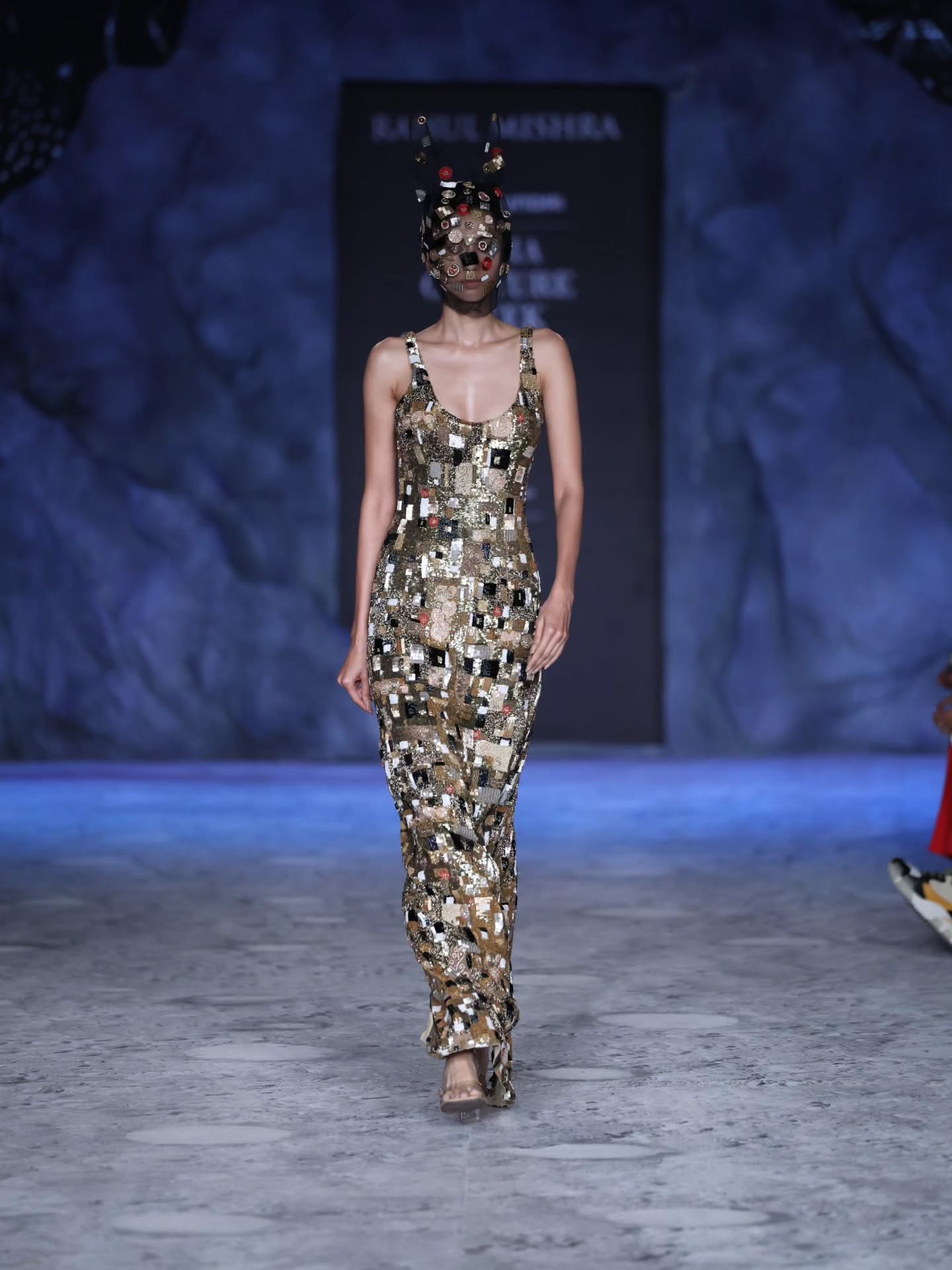
Close To Home
Mishra struck a balance between the highly sculptural, fantastical pieces commonly associated with haute couture and distinctly wearable creations more accessible to the Indian consumer. Where the Paris show landed more solidly in the camp of the fanciful, the India-specific collection was extended to include a number of sleeker pieces in familiar and traditional Indian silhouettes. The most notable addition was the bejewelled, watercolour-toned lehenga donned by actress Tamannaah Bhatia, and a sari in a similar palette. These pieces took a softer approach to the collection’s central theme, using shades of pink and white to represent the purity of love.
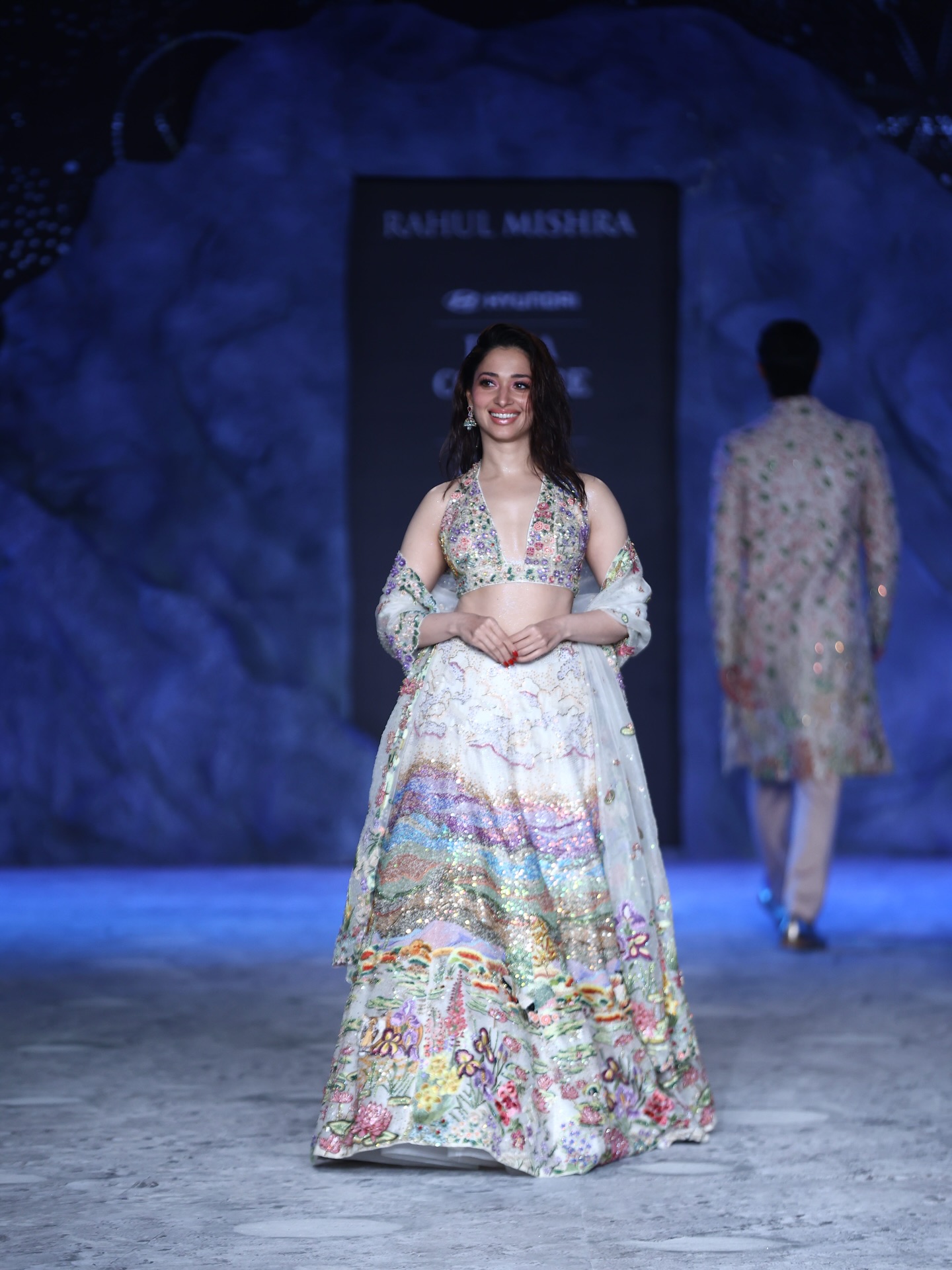
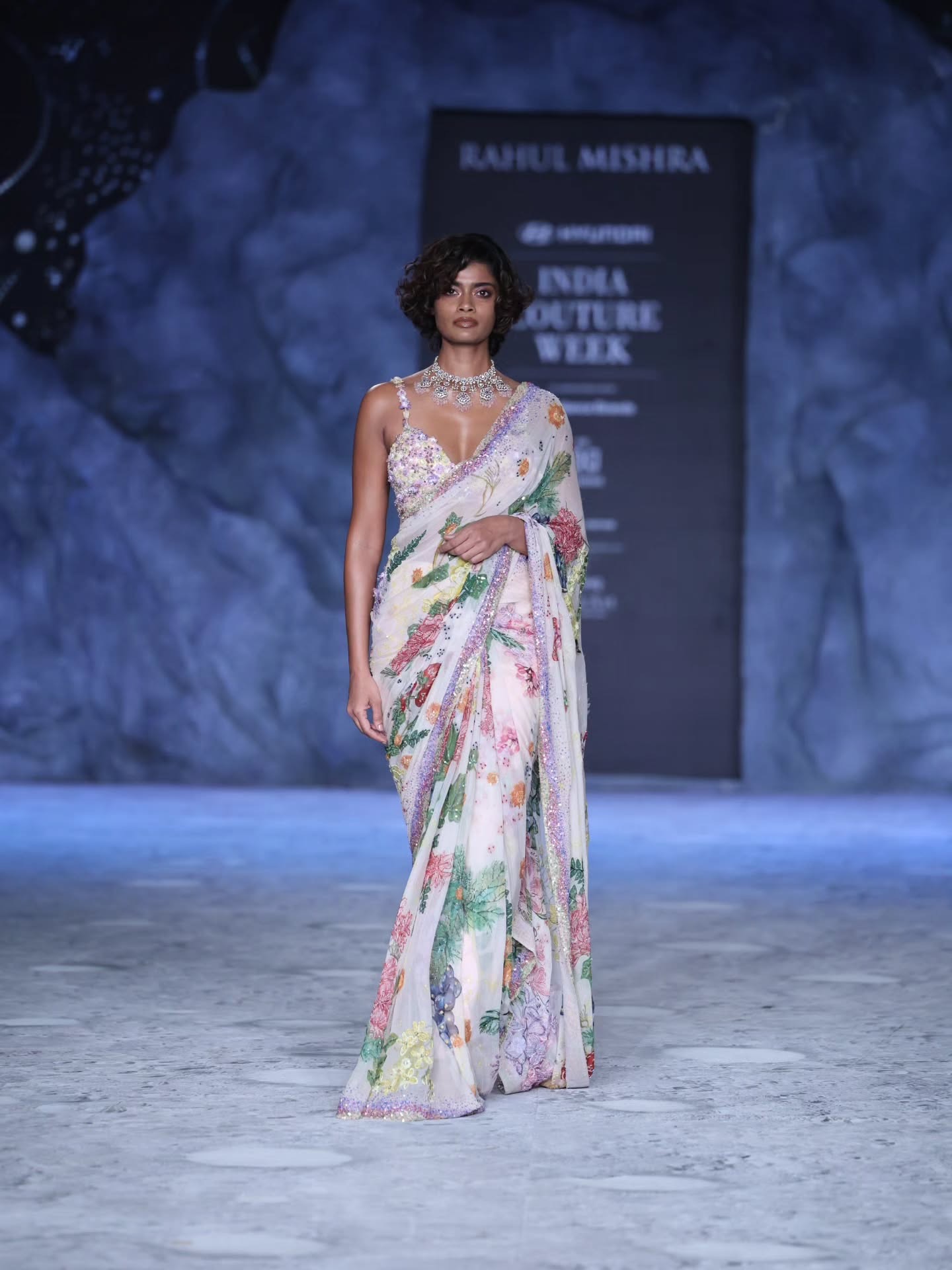
India On The Global Stage
India has made waves in the fashion world in the past few weeks, albeit for mixed reasons. Rahul Mishra garnered international attention with his Paris Couture Week runway show, which was attended by Cardi B and Law Roach. However, one month prior, Prada’s menswear collection at Milan Fashion Week displayed footwear that was strikingly similar to Indian Kolhapuri leather sandals. The move caused controversy within Indian fashion circles, drawing ire and accusations of cultural appropriation. The Italian fashion house promptly put out a statement acknowledging the Maharashtrian and Karnatakan origins of the pieces, and confirmed that they had opened a dialogue with the Maharashtra Chamber of Commerce.
This was not the Western world’s first foray into Indian fashion. Dior’s Fall/Winter 2023 show, held in Mumbai and directly inspired by Indian embroidery and silhouettes, marked the first time a European luxury brand held a standalone show in the country during the official Fashion Week season. The reception was markedly different to that of Prada’s sandals. The collection was welcomed by the nation’s leading creatives and hailed by many as a respectful and fitting tribute to Indian craftsmanship and fashion heritage.
India’s preeminent fashion figures thus find themselves grappling with the effects of global attention to their craft and history. In this context, Mishra’s collection, while designed and manufactured entirely in India, champions the nation’s heritage in more ways than just its provenance. It also broaches a larger question about what culture and heritage mean in today’s fashion industry. When global accessibility to the nation’s craftsmanship is at an all-time high, what does it mean for a collection to be truly Indian?
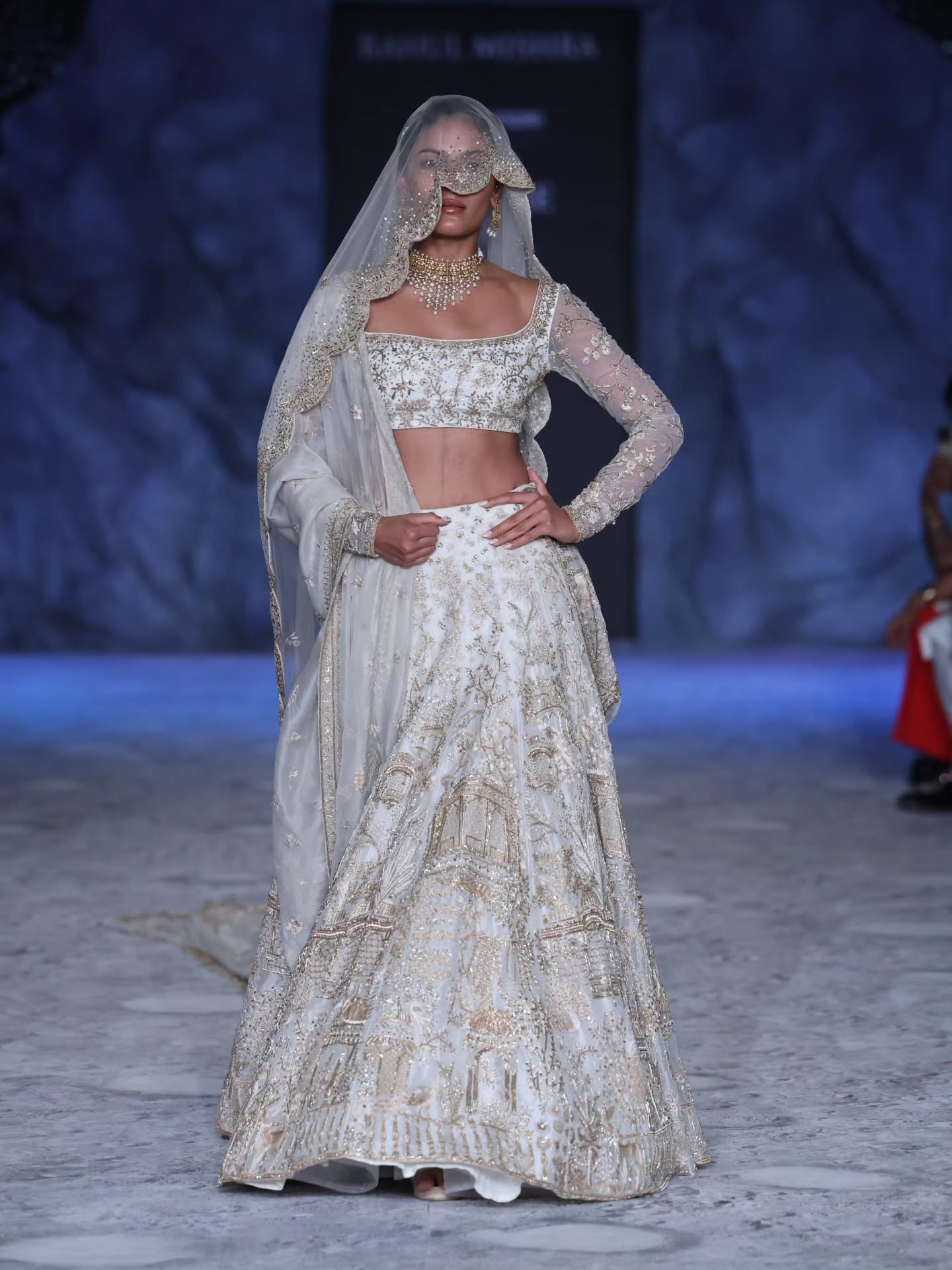
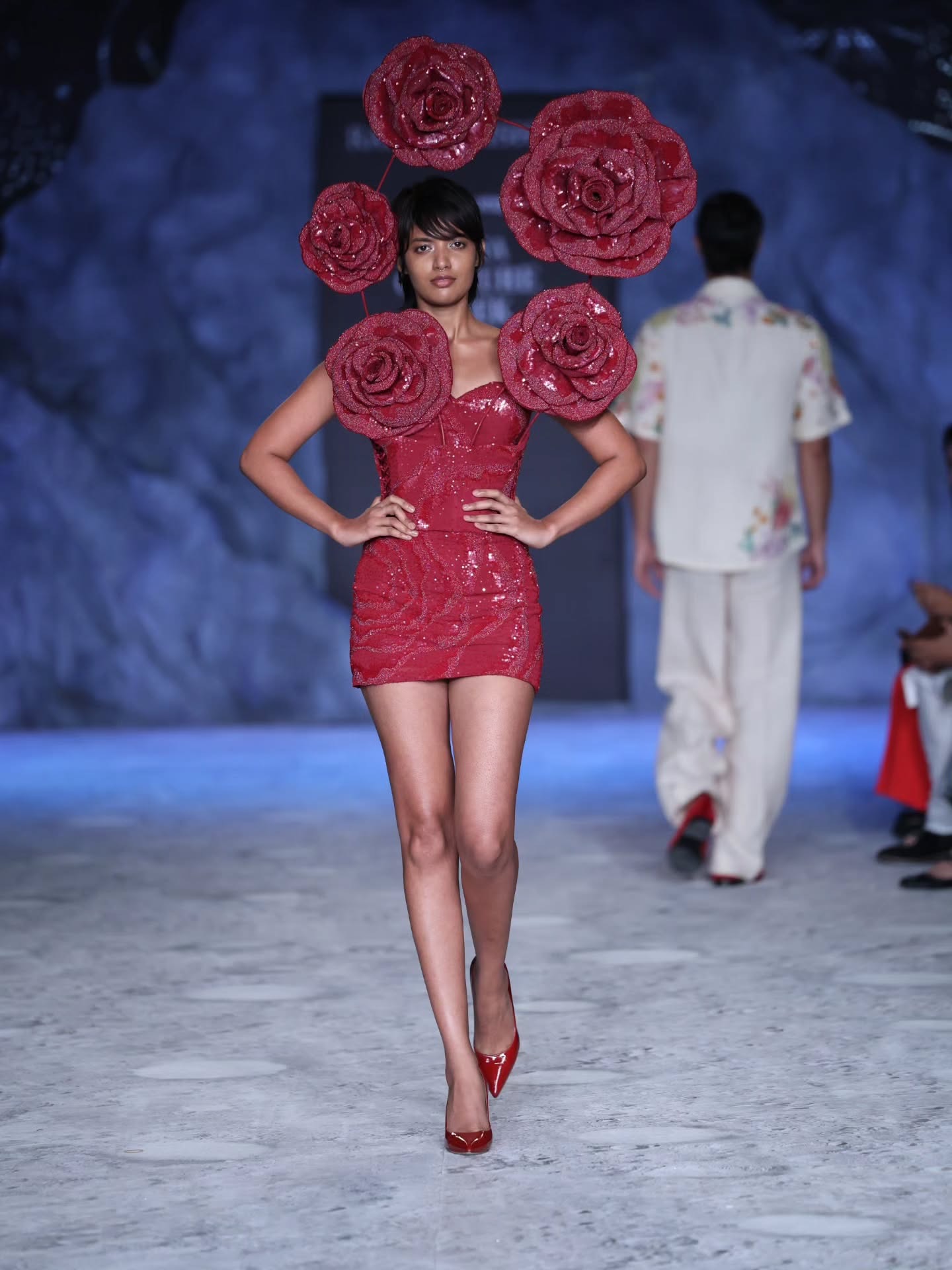
In Mishra’s case, the ties to home lie both in the collection’s inception and its creation. Be it the religious mysticism behind the pieces or the traditional craftsmanship in each stitch, Becoming Love honours India in myriad ways.
READ MORE
All The High Jewellery Highlights From Haute Couture Week
